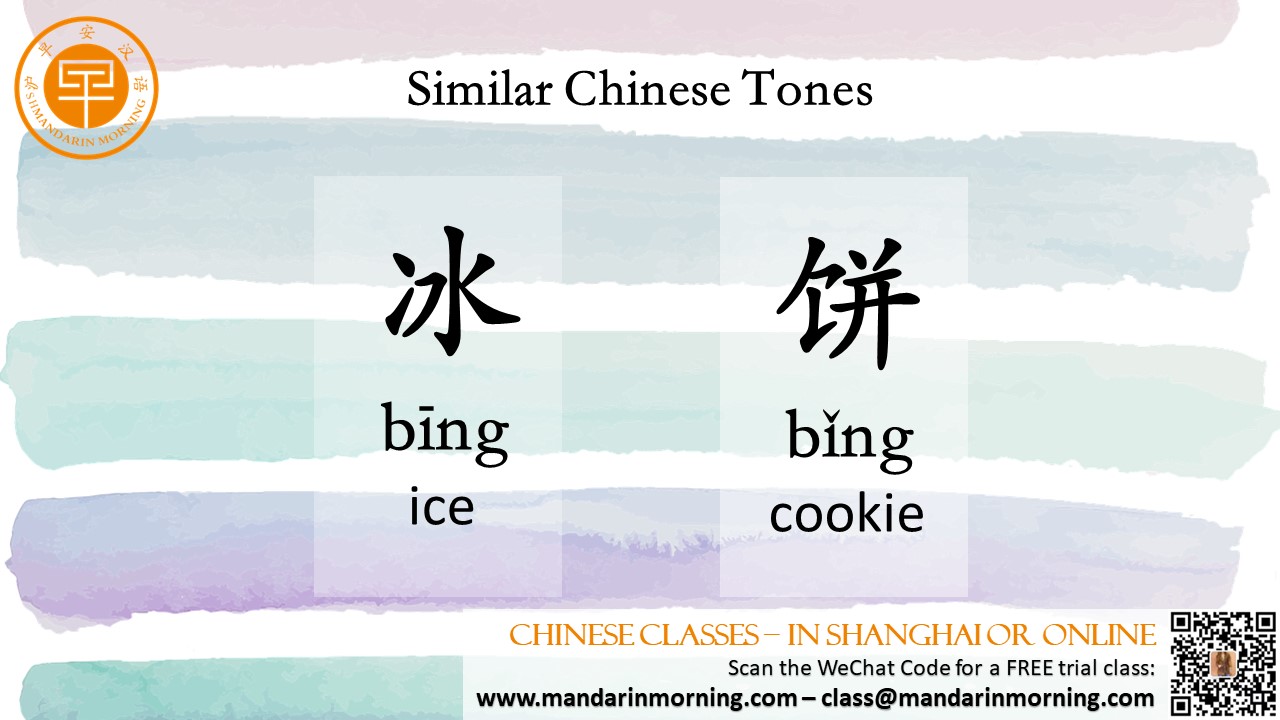【Learn Chinese】Don’t mix up the Tones of these Chinese Words! (Part 2) |
| Picture this: mistakenly calling your mom (妈; mā) a horse (马; mǎ). Oops! That’s the kind of awkward situation you can find yourself in when tones get mixed up in these Chinese homophones. Here are ten examples why you should pay a lot of attention to tones when you are learning Chinese. This is part two of our article.  Eight 八 vs Dad 爸 Shall we continue with the vendor theme? Here’s another way things might go wrong: This time, you want eight oranges, so you try saying 八 (bā), the Chinese word for “eight,” hoping the vendor understands. But if your tone falls sharply instead of staying high and even, it could sound like “Dad,” 爸 (bà)! Now, the vendor is wondering why you’re being so familiar! By nailing this subtle difference, you’ll avoid funny mix-ups and get exactly eight of what you’re shopping for! Ten 十 vs Yes 是 Let’s switch roles – now you’re the seller! Picture this: a customer comes and requests ten of something, using the word 十 (shí; ten). But wait, did they agree to your previous question, saying “yes,” 是 (shì)? Here’s where it gets tricky because 十 (shí; ten) and 是 (shì; yes) can sound incredibly similar in Chinese. So, focus on the rising tone for 十 (shí; ten) and the definitive drop for 是 (shì; yes), and you’ll avoid any confusion from your customers. Die 死 vs Four 四 Who knew shopping in Chinese could be a matter of life and… numbers? Here’s where a small tonal mishap can cause not just a misunderstanding but outright alarm! You’re trying to say 四 (sì; four), but with an incorrect tone, you might end up saying 死 (sǐ), the Chinese word for “die.” Yes, numbers can be a matter of grave importance here! Ice 冰 vs Cookie 饼 Who would’ve thought that getting a chilled beverage and a tasty treat could be so tonally intertwined in Chinese? Imagine being in a café, wanting some “ice” (冰; bīng) in your drink, but because of a slight tone shift, you’re served a “cookie” (饼; bǐng). It was a sweet mistake, but a mistake nonetheless! For 冰 (bīng; ice), hold onto that first tone – as if you’re singing a high, constant note. On the other hand, 饼 (bǐng; cookie) brings in the third tone. Dive deep into your vocal range, keeping your voice low. Flower 花 vs Painting 画 Let’s delve into our final set of Chinese homophones: the “flower” (花; huā) and the “painting” (画; huà). When expressing the beauty of a 花 (huā; flower), channel that first tone. It’s a consistent, high pitch, like the brightness of a blooming petal. On the flip side, for 画 (huà; painting), bring in the fourth tone. It has a definitive, sharp descent in pitch, much like the moment of revelation when a masterpiece unveils its story. |